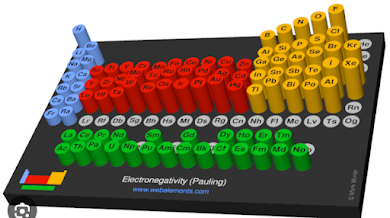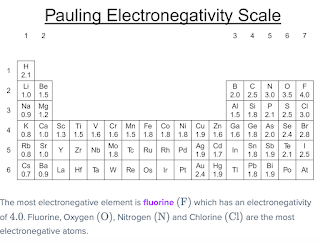This is a further reflection on the idea of Physics as Computation in the previous post with focus on the mystery of instant action at distance (there are many posts on this topic).
Mathematical models of physics typically take the form of differential equations such as Poisson’s equation
- $\rho=\Delta\Phi$ (1)
- $\Delta\Phi = \rho$ (2)
connecting gravitational/electric potential $\Phi (x,t)$, depending on a space coordinate $x$ and time coordinate $t$ coordinate, to mass/charge density $\rho (x,t)$, and $\Delta$ is the Laplacian differential operator involving second order differentiation.
In a Hen-Egg setting $\Phi$ represents Hen and $\rho$ Egg, either as local differentiation/assignment $\rho =\Delta\Phi$ as Hen-laying-Egg, or solution of $\Delta\Phi = \rho$ by global integration/summation as Egg-generating-Hen by instant action at distance.
How to choose between (1) and (2)? Local differentiation or global integration/instant action at distance?
If you are a (pure) mathematician, you would without hesitation say that there is a method for symbolic differentiation and so (1) is in a sense trivial. On the other hand there is no method for symbolic solution of (2), which is the non-trivial problem of the symbolic Calculus of Leibniz/Newton.
Mathematicians know that if symbolic solution fails, because it has no method, it is always possible to resort to numerics as a form of trivial work-horse, which case-by-case can compute solutions by number crunching. So is mathematics split into symbolic/analytical mathematics and numerical mathematics (in descending prestige) with essentially different basic elements: symbols or numbers.
As an example, symbolic differentiation is trivial while numerical differentiation is a delicate subject because a derivative $\frac{dx}{dt}$ involves the quotient of small numbers requiring precision. In general differentiation is a delicate process because precise identification is needed. So what can be trivial in symbolic mathematics can be non-trivial in numerical mathematics.
On the other hand, symbolic integration is non-trivial while numerical integration is trivial as it is just a form of summation.
So the world of symbolic mathematician and numerical mathematics is very different, since what is trivial or non-trivial can be opposite.
We now turn to real physics as something real existing in the real world (ontology). What is the relation of real physics to symbolic mathematics and to numerical mathematics?
Since symbolic mathematics works with symbols rather than numbers it has a connection to epistemology. We now ask if numerical mathematics is closer to ontology/real physics and so if we can learn anything about real physics from numerical computation.
In particular, we seek the real physics of (1) vs (2) as the Hen-Egg question posed above. We recall that numerical solution of (2) is trivial as simply global summation, while (1) is non-trivial as delicate differentiation.
If we believe that physics is non-trivial, then (1) represents physics: Hen lays Egg as a delicate non-trivial local operation, but not asking for instant action at distance in a global solution process.
On the other hand, for (2) to represent physics requires instant action at distance as instant global summation.
We are thus led to the conclusion that (1) represents real physics as a local differentiation process. The apparent instant action at distance in (2) would then represent non-real fiction.
We thus find support of an idea that computation and real physics are closely connected, while the connection of symbolic mathematics to real physics can be difficult to assess.
The gravitational potential generates mass by local differentiation. Mass does not (have to) generate gravitational potential by global instant action at distance.
It seems to make sense to say that physics differentiates in the sense of evaluating force differences, while physics integrates by time stepping creating motion, which opens to physics without mysterious instant action at distance. In numerics differentiation (1) can be traded with integration (2) with fictitious instant action at distance.
Another aspect is that you can see mass but not gravitational potential itself only its effect, and you may be tempted to believe that what you can see is primary and what you cannot see is secondary. But that depends on your senses of perception and so may not tell the true story from an objective physical point of view. You see a person getting smaller receding from you, but you know it is an illusion.
PS It is also possible to give up the cause-effect aspect in the potential-mass connection and like Leibniz say that potential and mass are connected in Perfect Harmony or Best of Worlds, which has been ridiculed...maybe it is time for Leibniz to come back...in any case he laid the mathematical foundations to the digital world as a world combining ontology with epistemology...
But of course it is possible to turn the argument around as follows: Consider Newton's 2nd Law
- $\frac{dv}{dt} = f(t)$ (3)
where $v(t)$ is velocity and $f(t)$ is force. The standard view is that the force $f(t)$ is given and causes the acceleration $\frac{dv}{dt} = f(t)$ as (2). But we may also view $v(t)$ to be given and $f(t)=\frac{dv}{dt}$ simply the force required as in (1). This describes a situation where the nature of the force is unclear, while velocity/motion is very real. This is the case with the Coriolis force and of course centrifugal force. Einstein tried to get rid of gravitational force (and aether) altogether, but did not succeed…
Numerical solution of (3) is done by time stepping $dv=f(t)*dt$ updating velocity with input from force, which has direct physical meaning as motion as summation, thus with numerics in tandem along with (2).
Conclusion: We may say that numerics can connect to both (1) and (2), while the role of symbolic math in physics remains to be made precise with the physical meaning of the symbolic wave function $\Psi$ of quantum mechanics, as solution to Schrödinger’s equation, after 100 years of constant brooding, still being a complete mystery in its standard so called Copenhagen interpretation. On the other hand, RealQM offers a physical meaning in classical continuum mechanics terms with the kinetic energy of the electrons appearing as a form of elastic energy preventing the electron to fall into the kernel by an elastic force balancing kernel attraction, just like the centrifugal force of motion prevents a planet to fall into its Sun. Both forces appear as necessary conditions for maintenance of certain states (Lagrange multipliers) as virtual forces without concrete physical origin: Planets move the way they do because forces balance, and electrons assemble around the kernel because forces balance. Leibniz would agree, I am sure!
Recall that the wave function $\Psi (x)$ for the ground state of the Hydrogen atom minimises the total energy E as "kinetic" energy + potential energy:
- $E(\psi ) = \frac{1}{2}\int\vert\nabla\psi\vert^2dx- \int\frac{\psi^2 (x)}{\vert x\vert}dx$
over all real-valued functions $\psi (x)$ with $\int\psi^2dx=1$, which can alternatively be interpreted as the state of a normalised elastic cloud subject to an elastic central force with the kinetic energy appearing as "elastic" energy. The terminology "kinetic" energy is misleading (motivated by some deep symbolism) since no motion is involved, while "elastic" energy has a concrete physical meaning as a measure of elastic compression suggesting some form of electronic charge compression for the atom.












